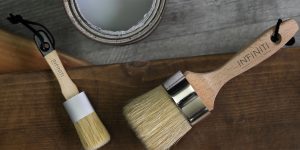It is the question that people often ask on several occasions, yet it is pretty tricky to answer. So, to get closer to the truth, let’s define what natural and synthetic paint brushes are.
So what are these two types of brushes?
Natural brushes are traditionally made using animal hair bristles or hog bristles located at the end of a wooden handle. On the other hand, synthetic paint brushes are made exclusively with manufactured materials such as nylon or polyester.
What are the main differences?
The differences between these two brush types are numerous and depend on many variables.
First, it is essential to note that synthetic brushes are less expensive than natural paintbrushes. Also, since their bristles are usually made from nylon or polyester, they tend to be more durable than their natural counterparts.
Moreover, when it comes to the color intensity and brightness, on the synthetic brush, color appears more saturated than the same one on a natural brush. It’s because natural hairs are superior at holding large quantities of liquids, oils, mediums, etc., then synthetic fibers. The brush will also retain its shape better because it can absorb some liquid inside the natural hair, whereas synthetic brushes cannot.
Finally, since the bristles of a synthetic paintbrush are usually thicker and firmer, it is easier to use them with thick paints or glue.

What paint are brushes easier to clean, natural or synthetic?
The simple answer is synthetic, but the better answer depends on how you are cleaning them.
Natural hair makes more sense if you’re using soap and water to clean your brushes. However, if you use mineral spirits or odorless mineral spirits to clean your brushes, go synthetic. It’s all about the brush care method you choose.
Synthetic brushes are more resistant to fading and can withstand being washed several times without their bristles changing form or shape.
However, it is essential to note that all paintbrushes will lose their effectiveness over time, whether natural or synthetic. Therefore, when choosing between a natural dye brush and a synthetic brush, it is essential to consider the type of painting project you plan on embarking upon.














